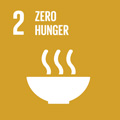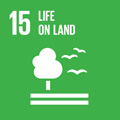- Docente: Fabio Sgolastra
- Credits: 5
- SSD: AGR/11
- Language: Italian
- Moduli: Fabio Sgolastra (Modulo 1) Antonio Martini (Modulo 2)
- Teaching Mode: Traditional lectures (Modulo 1) Traditional lectures (Modulo 2)
- Campus: Bologna
-
Corso:
First cycle degree programme (L) in
Marketing and Economics of the agro-industrial system (cod. 8526)
Also valid for First cycle degree programme (L) in Land and agro-forestry Sciences (cod. 8525)
Learning outcomes
At the end of the course the student will know the morphology, anatomy of insects; the biology and ethology of the main pest insects. The student will be able to understand the relationship between insects and agro-forest ecosystems in the framework of the integrated pest management.
Course contents
CONTENTS
MODULE 1 (2 CFU)
1. Insects ed ecosystems
1.1. Insect biodiversity;
1.2. Importance of insects in the ecosystems;
1.3. Agroecosystems;
1.4. Population dynamics of insects;
1.5. The impact of introduced exotic insect species;
1.6. Beneficial and pest insects
2. Insect pest control in agro-forest ecosystems
2.1. Biological and microbiological control
2.2. Mechanical, physical and agronomical control.
2.3. Chemical control and side effects of pesticides
2.4. Integrated pest control
MODULE 2 (3 CFU)
1. General morphological, anatomical, physiological traits of insects
1.1. The Class Insecta: systematic of the main orders and differences with other Arthropods
1.2. Morfology, anatomy, physiology of insects
1.2.1. Morfology: head, mouthparts, thorax, legs and wings, abdom and its appendages
1.2.2. Anatomy: integument, nervous system, gaseous exchange, alimentary canal, riproductive system, exocrine and endocrine system
1.2.3. Physiology: pheromones, hormones and their functions; riproduction modalities; metamorphosis, postembryonic development; diapause; pesticide mode of actions
2. Special Part
2.1. Notes on taxonomy, general features and biological characteristics of the following orders of the class of Insects: Collembola, Ephemeroptera, Odonata, Blattodea, Isoptera, Dermaptera, Phasmida, Orthoptera (Caelifera and Ensifera), Thysanoptera, Rhynchota (Heteroptera and Homoptera), Neuroptera, Trichoptera, Lepidoptera, Diptera, Coleoptera, Hymenoptera.
2.2. Biological cycle of insects of special interest in agriculture and control methods:
2.2.1. Hemiptera: Halyomorpha halys, Aphids. Quadraspidiotus perniciosus
2.2.2. Lepidoptera: Cydia pomonella, Thaumetopoea pityocampa
2.2.3. Diptera: Drosophila suzukii
2.2.4. Coleoptera: Leptinotarsa decemlineata
2.2.5. Hymenoptera: Dryocosmus kuriphilus.
2.3. General traits of the following species and families: Blatta orientalis, Blattella germanica (Blattodea), Gryllus campestris, Gryllotalpa gryllotalpa, Dociostaurus maroccanus,Calliptamus italicus (Hortoptera); Fam. Tefritidi (Bactrocera oleae, Ceratitis capitata, Rhagoletis cerasi) (Diptera) Fam. Curculionidi, Fam. Cerambicidi, Fam. Scarabeidi, Fam. Coccinellidi (Coleoptera); Vespa crabro, Apis mellifera (Hymenoptera).
PRACTICAL ACTIVITIES
Laboratory activities on morpholoy and anatomy of insects
- Visit of the Entomological Collection in the Department
- Field activities
- Seminars and workshops
Readings/Bibliography
Il will be very important the use of the material (slides) distributed by the teacher (in Italian) and the lecture notes.
Textbook
Tremblay E.- Entomologia applicata. Volume primo: Generalità e Mezzi di Controllo.- Liguori editore, Napoli
Gullan P.J., Cranston P.S., 2006.- Lineamenti di Entomologia. Zanichelli, Bologna
Masutti L., Zangheri S., 2001.- Entomologia generale e applicata.- CEDAM, Padova
Pollini A., 2013.- Entomologia applicata.2a ed. Edagricole, Milano (solo specie in programma)
Colazza S., Peri E., Lo Bue P. 2018. – Lineamenti di Entomologia in agricoltura biologica, Palermo University Press.
Textbook for students that want to take the final exam in English:
Gullan P.J. and Cranston P.S. 2000 - The Insects. An outline of Entomology. Blackwell Science LtdTeaching methods
The course is composed of 5 CFU performed with slides which will be available to the students for the preparation of the exam. Practical activities will be alternated to the lectures. During the exam preparation, the students will be encouraged at watching the entomological cases available at the Entomology area in a special classroom.
Assessment methods
The final exam consists of an oral test (duration: about 15 minutes). The student, during the exam, will have also to recognize insect species and groups in entomological cases, similar to those available in the Entomology area (viale Fanin 42, III floor).
Students can require to take the final exam in English.
Teaching tools
PC, Projector, Entomological Collection
Office hours
See the website of Fabio Sgolastra
See the website of Antonio Martini
SDGs


This teaching activity contributes to the achievement of the Sustainable Development Goals of the UN 2030 Agenda.
